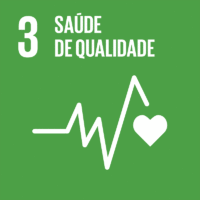Ciência_Iscte
Publicações
Descrição Detalhada da Publicação
Título Revista
Journal of Personality and Social Psychology
Ano (publicação definitiva)
2025
Língua
Inglês
País
Estados Unidos da América
Mais Informação
Web of Science®
Scopus
Google Scholar
Esta publicação não está indexada no Overton
Abstract/Resumo
Ideal partner preferences (i.e., ratings of the desirability of attributes like attractiveness or intelligence) are the source of numerous foundational findings in the interdisciplinary literature on human mating. Recently, research on the predictive validity of ideal partner preference matching (i.e., Do people positively evaluate partners who match vs. mismatch their ideals?) has become mired in several problems. First, articles exhibit discrepant analytic and reporting practices. Second, different findings emerge across laboratories worldwide, perhaps because they sample different relationship contexts and/or populations. This registered report—partnered with the Psychological Science Accelerator—uses a highly powered design (N = 10,358) across 43 countries and 22 languages to estimate preference-matching effect sizes. The most rigorous tests revealed significant preference-matching effects in the whole sample and for partnered and single participants separately. The “corrected pattern metric” that collapses across 35 traits revealed a zero-order effect of ? = .19 and an effect of ? = .11 when included alongside a normative preference-matching metric. Specific traits in the “level metric” (interaction) tests revealed very small (average ? = .04) effects. Effect sizes were similar for partnered participants who reported ideals before entering a relationship, and there was no consistent evidence that individual differences moderated any effects. Comparisons between stated and revealed preferences shed light on gender differences and similarities: For attractiveness, men’s and (especially) women’s stated preferences underestimated revealed preferences (i.e., they thought attractiveness was less important than it actually was). For earning potential, men’s stated preferences underestimated—and women’s stated preferences overestimated—revealed preferences. Implications for the literature on human mating are discussed.
Agradecimentos/Acknowledgements
--
Palavras-chave
Attraction,Close relationships,Human mating,Ideals,Matching hypothesis
Classificação Fields of Science and Technology
- Psicologia - Ciências Sociais
Registos de financiamentos
| Referência de financiamento | Entidade Financiadora |
|---|---|
| APVV-19-0284 | Vedecká Grantová Agentúra MŠVVaŠ SR a SAV |
| UID/PSI/03125/2022 | Fundação para a Ciência e a Tecnologia |
| 451-03-47/2023-01 | Ministry of Science, Technological Development and Innovation of the Republic of Serbia |
| VEGA 1/0853/21 | Vedecká Grantová Agentúra MŠVVaŠ SR a SAV |
| PRIMUS/24/SSH/017 | NPO |
| JP22K18263 | Japan Society for the Promotion of Science |
| #2235066 | U.S. National Science Foundation |
| APVV-22-0458 | NPO |
| K23DK115820 | National Institutes of Health |
| JP20H04581 | Japan Society for the Promotion of Science |
| #62295 | John Templeton Foundation |
| LX22NPO5101 | NPO |
| 2020/0738 | Association Nationale de la Recherche et de la Technologie World Wildlife Fund |
| JP21H03784 | Japan Society for the Promotion of Science |
| DP180102384 | Australian Research Council |
| B.A.CG-20-02170 | Sabanci University Integration |
| 62631 | John Templeton Foundation |
| BCS-1941440 | National Science Foundation |
Contribuições para os Objetivos do Desenvolvimento Sustentável das Nações Unidas
Com o objetivo de aumentar a investigação direcionada para o cumprimento dos Objetivos do Desenvolvimento Sustentável para 2030 das Nações Unidas, é disponibilizada no Ciência_Iscte a possibilidade de associação, quando aplicável, dos artigos científicos aos Objetivos do Desenvolvimento Sustentável. Estes são os Objetivos do Desenvolvimento Sustentável identificados pelo(s) autor(es) para esta publicação. Para uma informação detalhada dos Objetivos do Desenvolvimento Sustentável, clique aqui.

 English
English


